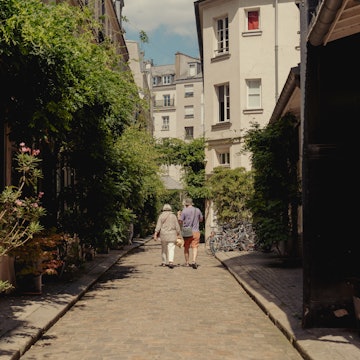
The 14 best things to do in York, England



York Minster Cathedral in the early light. Stephen Bridger/Shutterstock
With its Roman and Viking history and medieval core, York is one of northern England’s must-see cities. Despite its historic legacy, this is not a city stuck in the past – York's walkable center is filled with indie restaurants, quirky shops and inventive drinking dens.
On a walk through the old quarter, traces of York's long history are ever present. Indeed, you can't dig anywhere in this city without finding another archaeological site. The Roman city of Eboracum was founded here around 71 CE, and archaeologists believe only around three percent of Roman York has been excavated.
By the 9th century, York had become the capital of the Anglo-Saxon kingdom of Northumbria. In around 886 CE, it was captured by the Vikings, who renamed it Jorvik. Encircled by 2.5 miles (4km) of 13th- and 14th-century defensive walls, York still retains many of its medieval features. Grand banqueting halls, crooked half-timbered houses and exquisite mansions are just some of the treasures you can see firsthand.
If you come by train, you'll arrive at the Victorian-era station (around two hours from London). If you drive, leave your car outside the historic center and explore the city on foot. However you get here, be ready to dive into the best things to do in the city of York.
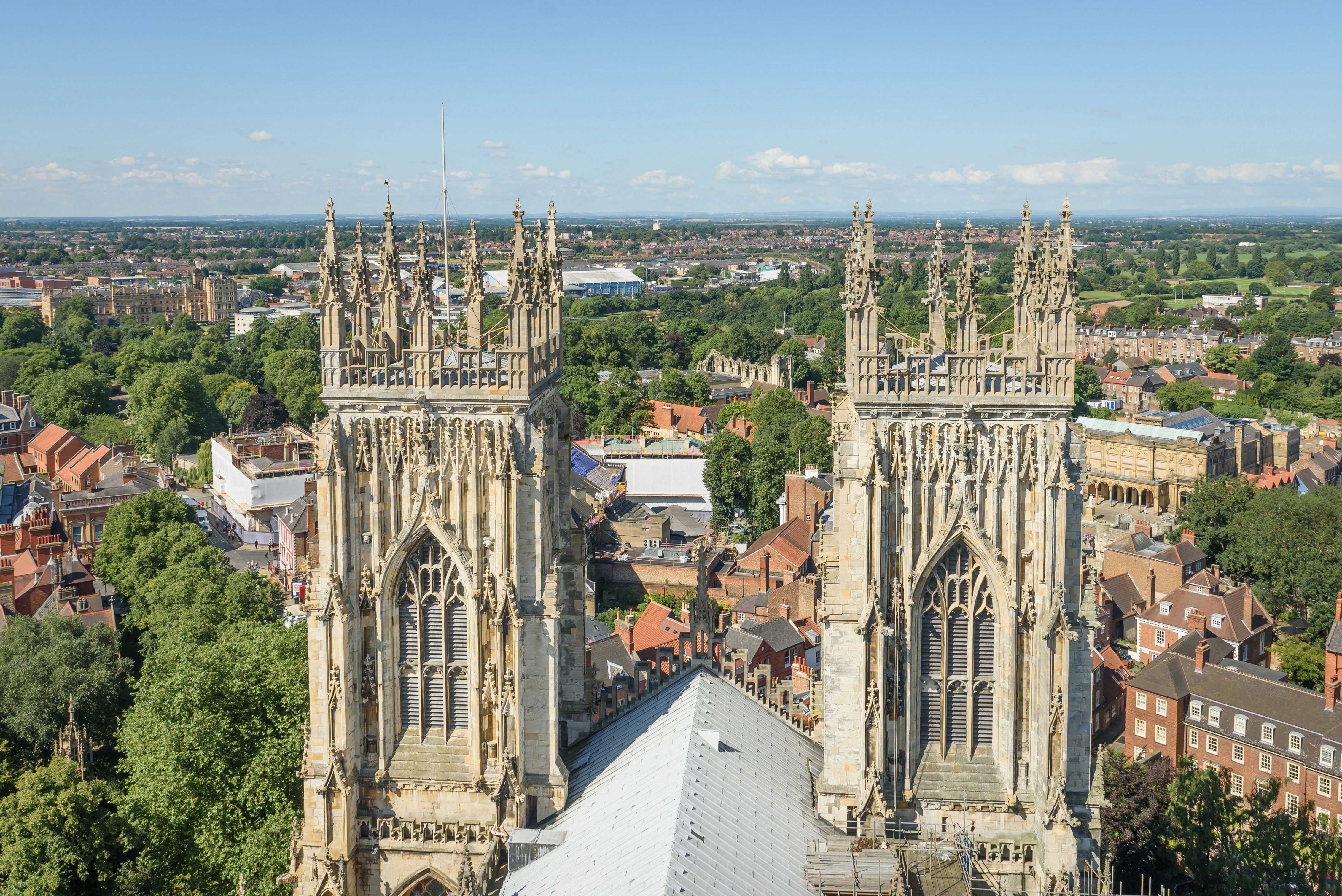
1. Let York Minster draw your gaze towards the heavens
One of York’s great treats is how often, when turning a cobblestone corner or squeezing down an age-old alley, you bump into its soaring cathedral, York Minster.
Constructed between 1220 and 1472, the cathedral is renowned as one of the world’s medieval Gothic masterpieces, and it’s worth getting up close to the interior craftsmanship. Here, you’ll find 700-year-old vaulted ceilings and nose-picking gargoyles illuminated by the cathedral’s 128 stained-glass windows.
A trip to the interactive museum in the undercroft reveals details of York’s 2000-year-old history, while the cathedral's central tower reaches dizzying heights above the city's rooftops. You can climb to the top for some stunning views of York, but be warned – the ancient stairwells are claustrophobic and those with a fear of heights should probably stick to admiring the stained-glass windows from the inside.
Planning tip: The cost of tickets for York attractions can quickly rack up. The Visit York Pass provides discounts, giving access to more than 40 of York's key sights (including York Minster) on a single digital ticket. Adult prices start at £65 (US$88.40) for adults and £40 ($54.40) for kids.
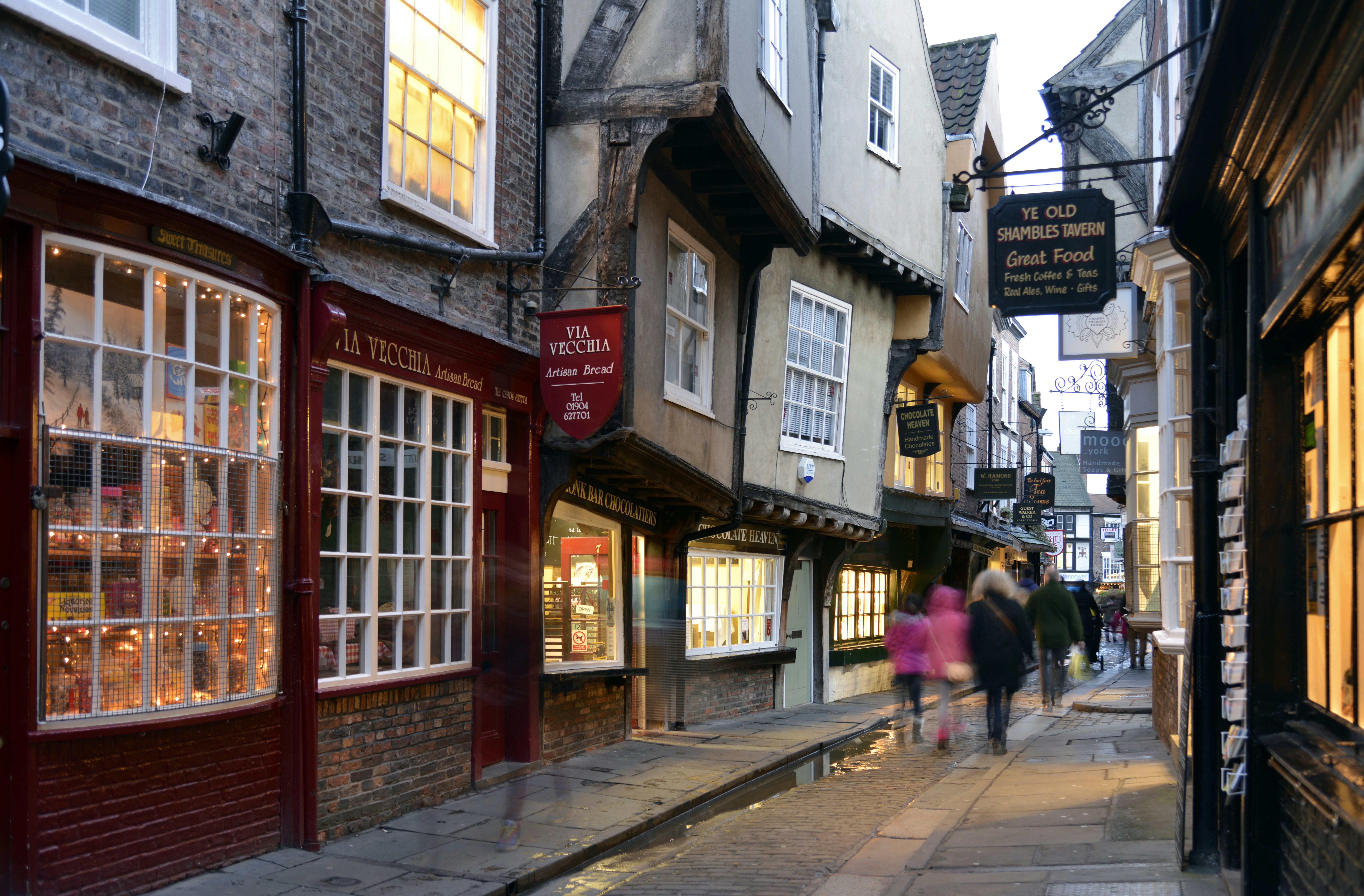
2. Step back in time on The Shambles
One of the best-preserved medieval streets in Europe, The Shambles is lined with wonky timber-framed houses dating back to the 15th century. Despite its much-photographed charm, this street once housed the city’s butchers and slaughterhouses. The overhanging buildings, which in places almost kiss above the narrow cobbled lane, were designed to shelter shelves of meat from the sun. Nowadays, it’s worth visiting to briefly become part of the hubbub and browse the eccentric collection of independent shops.
Planning tip: When hunger strikes, slip down an alleyway for a street food lunch in Shambles Market.
3. Search for ghosts on a walking tour
With a centuries-old history littered with turmoil and treachery, it’s little wonder York has a penchant for ghost stories. Even skeptics will be hard-pressed not to enjoy one of the city’s highly rated ghost walks.
Led by knowledgeable performers, tours have catchy names like the Bloody Tour of York, Shadows of York, and the Deathly Dark Ghost Tour, all promising plenty of macabre fun.
Planning tip: If you like your phantoms a little more tangible, York Ghost Merchants sells diminutive handcrafted spooks from its theatrical shop on The Shambles.
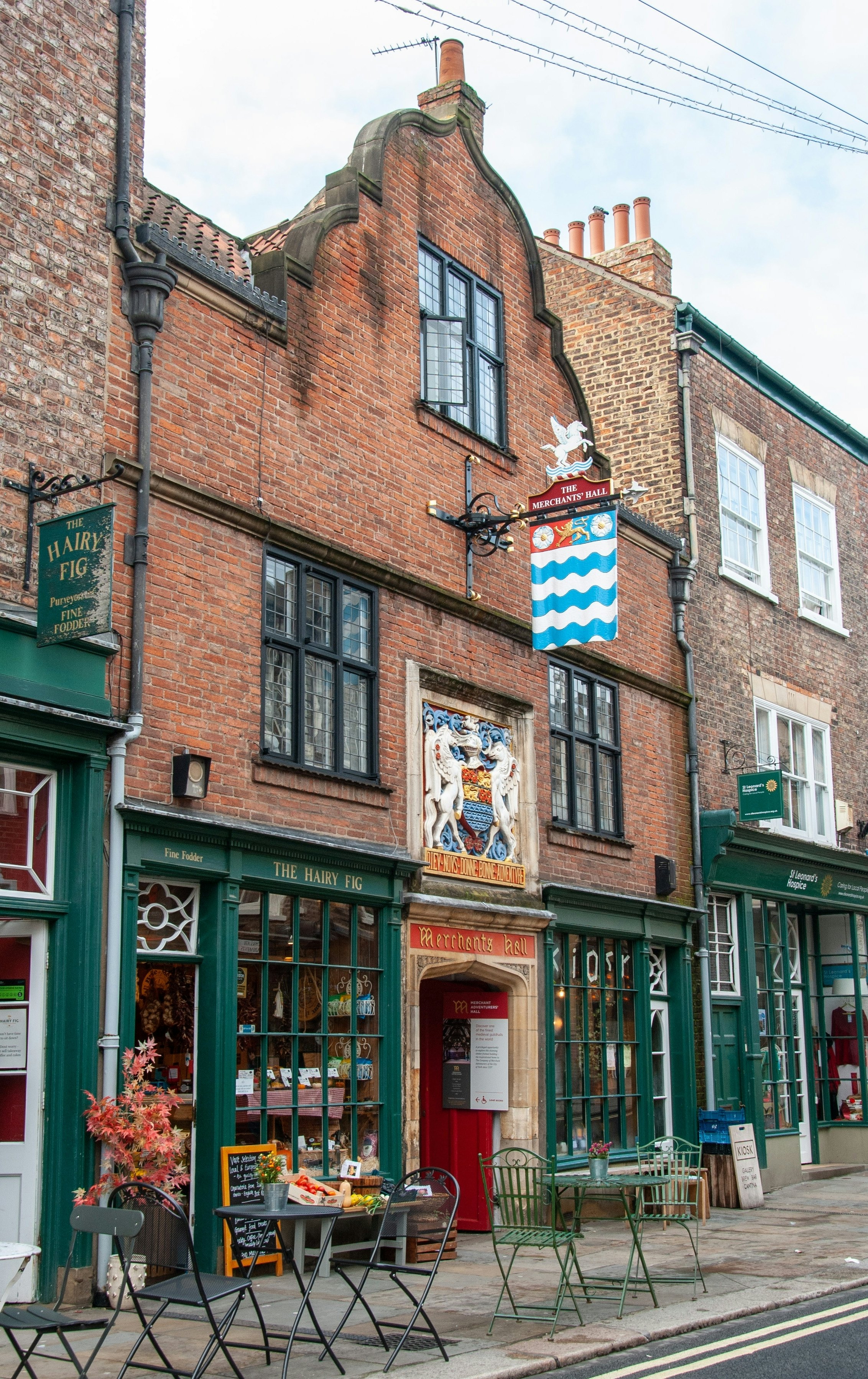
4. Make like a Tudor at the Merchant Adventure's Hall
Just south of The Shambles and near the River Foss, the Merchant Adventurers' Hall is York's greatest medieval building, and it's still owned by the same guild that founded it in the 14th century. Its entrepreneurial Tudor founders were merchants who made their fortunes by "adventuring" money in overseas markets at a time when York was an important river port.
Today, the hall includes a small cafe and exhibits about the guild. In the Great Hall, with its forest of timber beams, candle scorch marks and a medical advice board are evidence of its use as a hospital between the 14th and 20th centuries.
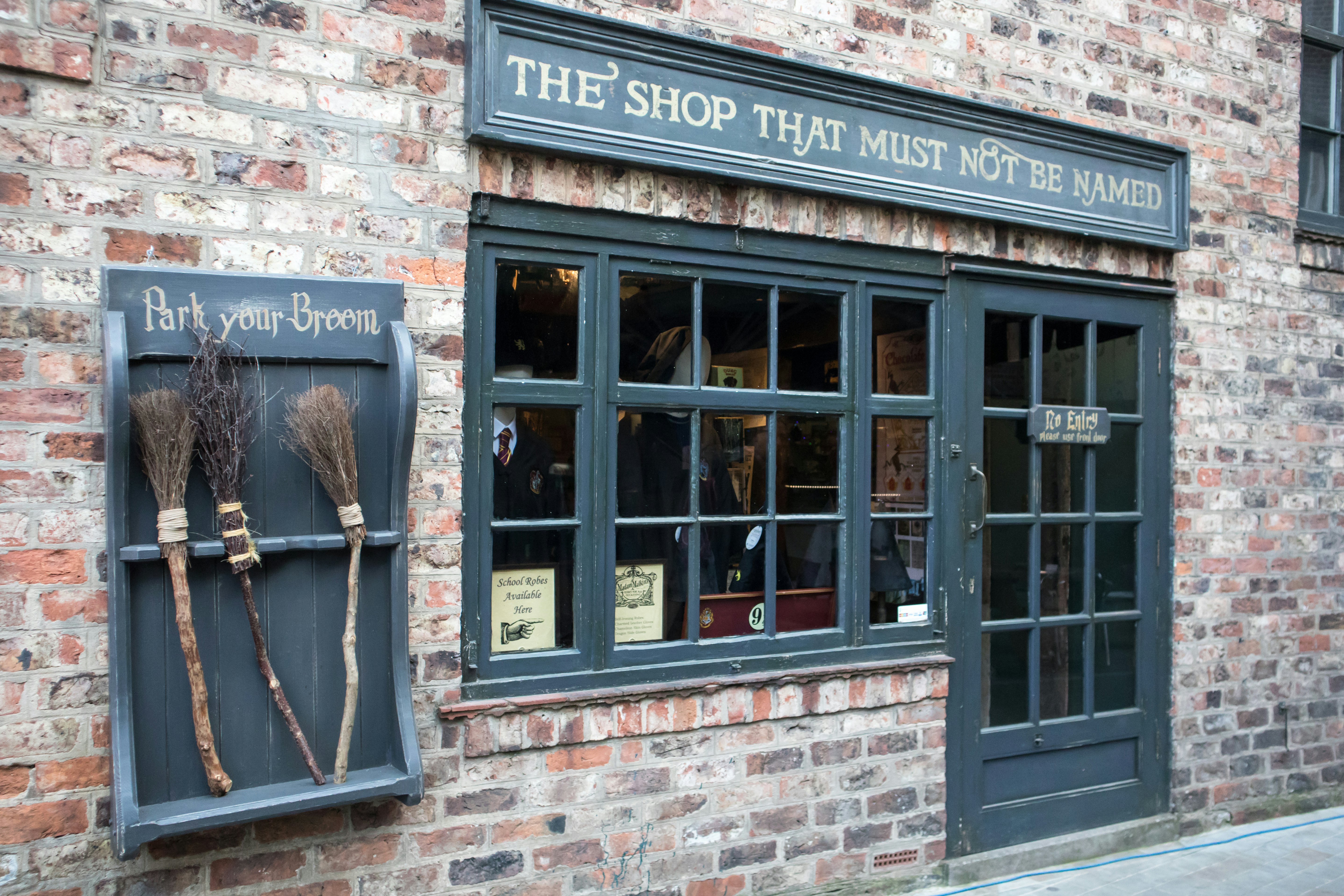
5. Find a sprinkling of Potter magic
Despite the fact that only one scene from Harry Potter was shot in York (the railway bridge scene featuring Hagrid in Harry Potter and the Philosopher's Stone), the city has become one of the must-visit destinations for fans. This is because the medieval Shambles is said to have inspired JK Rowling’s descriptions of Diagon Alley.
Today, the street capitalizes on its magical associations. At one end of The Shambles, The Shop That Must Not Be Named sells Quidditch memorabilia, wands and broomsticks. Across the road, The Potions Cauldron runs fun 25-minute potion-making experiences in a secret room.
Planning tip: Potter fans can complete the experience with a stay at nearby Minster Walk Guest House, which has a Harry Potter-themed suite, known as Room 8¾.
6. Taste your way around York's best cheese shops
What might French monks have to do with cheese in Yorkshire, you might ask? Well, Cistercian monks from Roquefort settled in Yorkshire in 1156, bringing the original recipe for Wensleydale cheese to England, according to historical records.
You can taste Wensleydale and other local dairy treats in York's excellent cheese shops. Just outside the city walls, Love Cheese & Wine sells Yorkshire cheeses plus European varieties at their "Speakcheesy" on Gillygate (closed Monday). You can try on-site at their secret garden cafe.
The Cheese Trader is nestled in the city center near York Minster, where you can buy cheese made with cows', goats' and ewes' milk, alongside Scottish, Welsh and European varieties. And for cheese lovers with more of a sweet tooth, head to the Cheesecake Guy on The Shambles, where cheesecake is sold by the slice, alongside cheesy cupcakes.
7. Learn about Vikings and Victorians at York's museums
Championing immersive experiences long before it became a thing, York’s museums excel at transporting you into the past. At the JORVIK Viking Centre, you’ll be treated to a smells-and-all ride through the cultural melting pot that was 10th-century York. The animatronic dioramas are based on evidence unearthed while excavating the Viking settlement below the building.
At the York Castle Museum, visitors are also encouraged to see artifacts in context. Take a stroll down a dimly lit Victorian Street and discover what life was like for captured highwayman Dick Turpin in the cell that held him (the building was once York’s most notorious prison).
For a more refined slice of history, the Fairfax House is a rarefied gem. Padding through this restored Georgian townhouse offers a glimpse into the lives of 18th-century gentlefolk, as well as a few lessons in period interior design. Touring the Treasurer’s House, on the other hand, feels like falling down a rabbit hole into a curious oversized doll’s house, filled with furnishings from across the ages.

8. Spot trains at the National Railway Museum
Until the 1960s, the vast exhibition halls of the free-to-enter National Railway Museum were part of York’s busy railway works. Today, they tell the story of extraordinary engineering feats, displaying gleaming locomotives and plush royal carriages.
Young rail enthusiasts will delight in discovering that you can climb aboard many of the exhibits, including a Japanese bullet train. You can also see the world’s fastest steam locomotive, the Mallard, which reached a speed of 126mph (203km/h) in 1938.
Detour: You can explore more of North Yorkshire and beyond by train if gazing upon beautiful countryside from the comfort of a reclining seat is right up your track. The trip from York to Newcastle-upon-Tyne via Durham is particularly scenic.
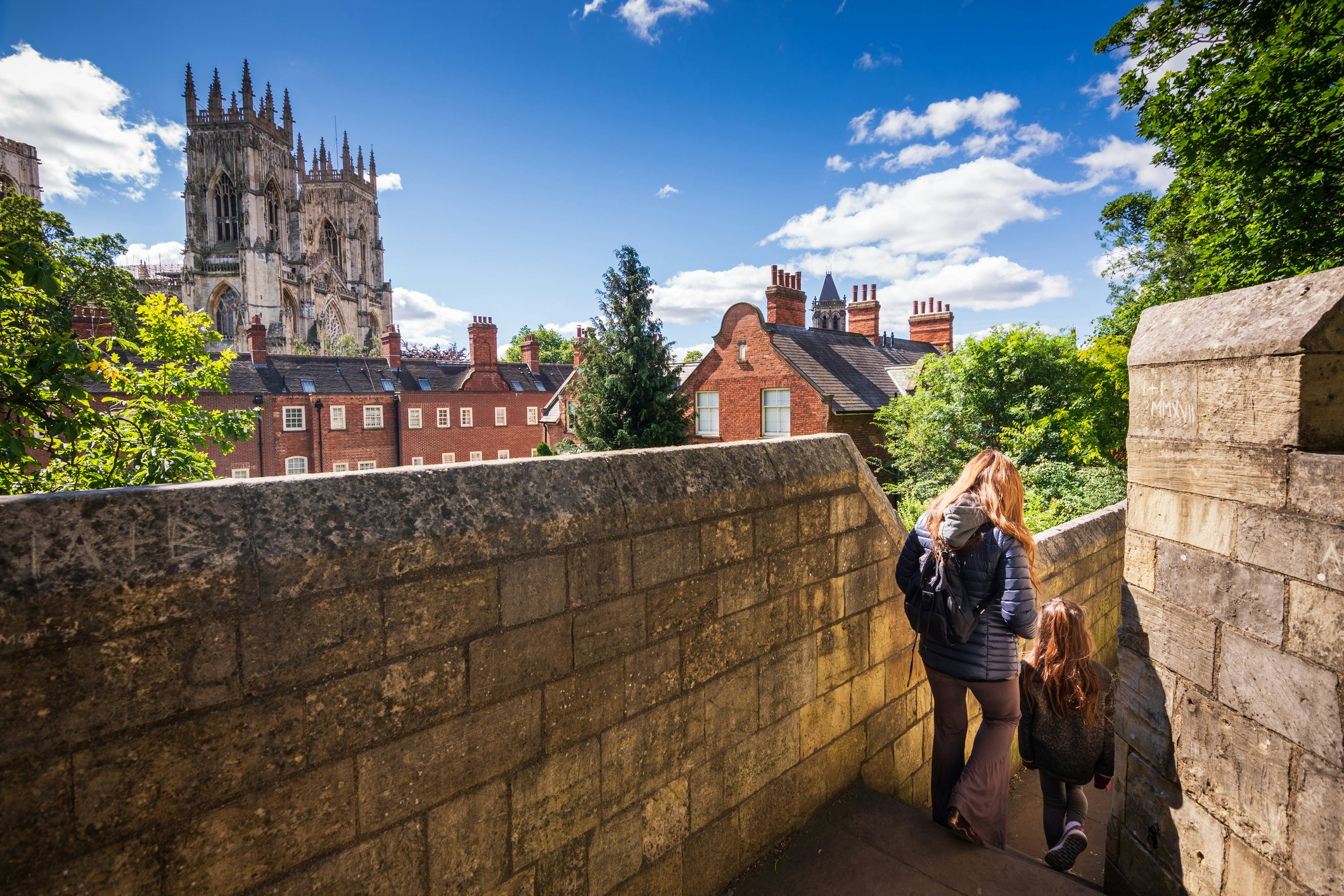
9. Walk the city walls
Perfect for history buffs, couples and snoopers alike, a stroll along York’s city walls allows you to peer down onto timeworn "snickleways" (alleyways) and courtyard gardens from atop the longest medieval ramparts in England.
Free to walk, and containing four grand "bars" (city gates), these 13th-century fortifications are, in fact, the new kids on the block. The Roman walls lie underneath, protruding through briefly in York’s tranquil Museum Gardens.
It takes a couple of hours to wander the 2.5-mile (4km) loop, peeping through arrowslits and digesting facts and figures from information boards. Alternatively, stroll a shorter section; the portion between Bootham and Monk bars has superb Minster views.
Planning tip: The hop-on, hop-off CitySightseeing York bus is a convenient way to hit all the city’s hotspots, especially if poor weather is an issue, or you have limited mobility.
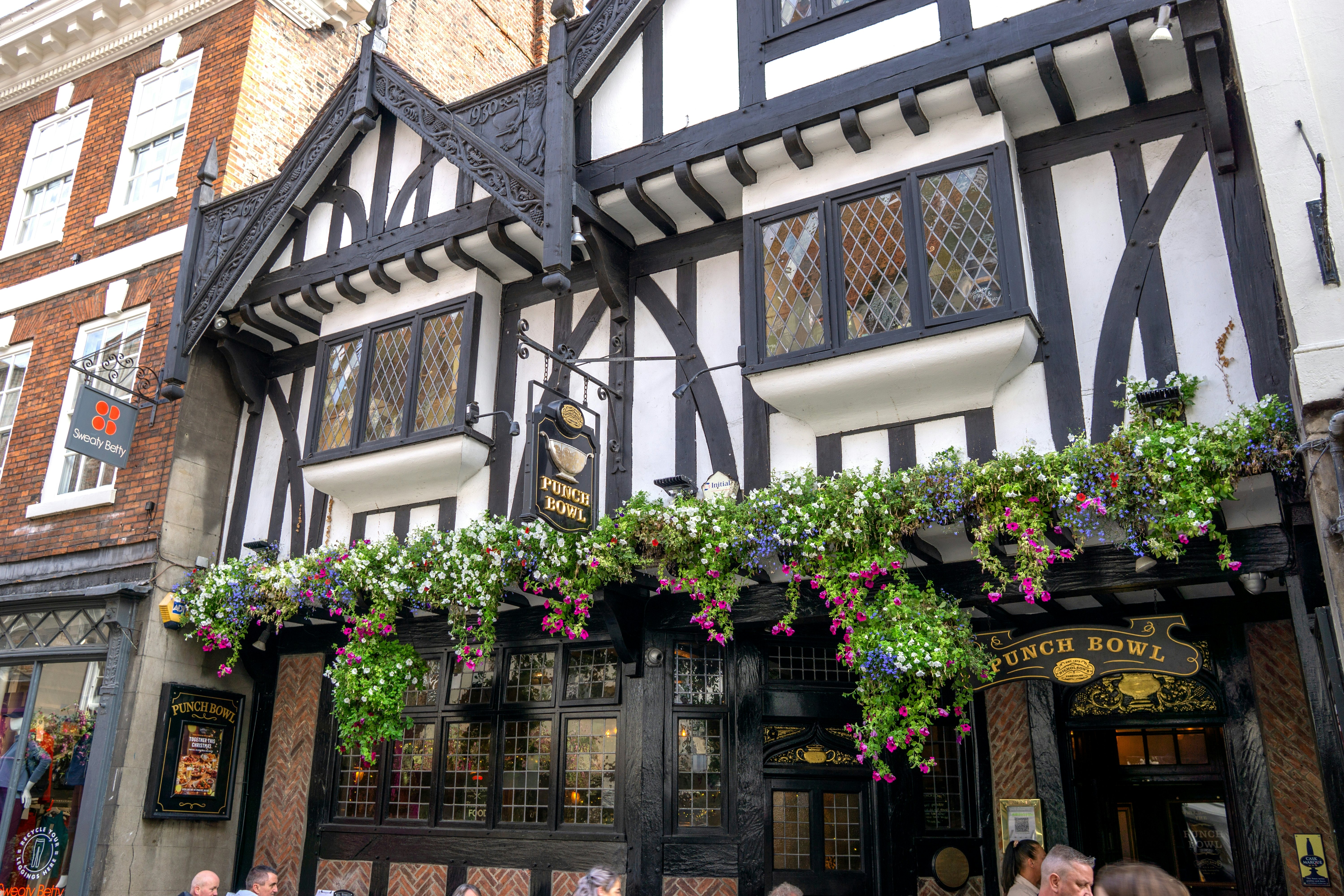
10. Head to a pub for a quick drink (or two)
York is famed for its diverse drinking dens, so it would seem rude not to pop into one of the city’s many pubs. Some of these oak-paneled taverns have been serving up booze since Tudor times, but if you want to time warp back to the 12th century, take a pew at the House of the Trembling Madness on Stonegate.
For a more contemporary feel, and a selection of 40 taps, there’s Brew York’s mural-festooned beer hall at Walmgate. Fancy a pint with a view? The King’s Arms overlooks the meandering (and occasionally flooded) River Ouse.
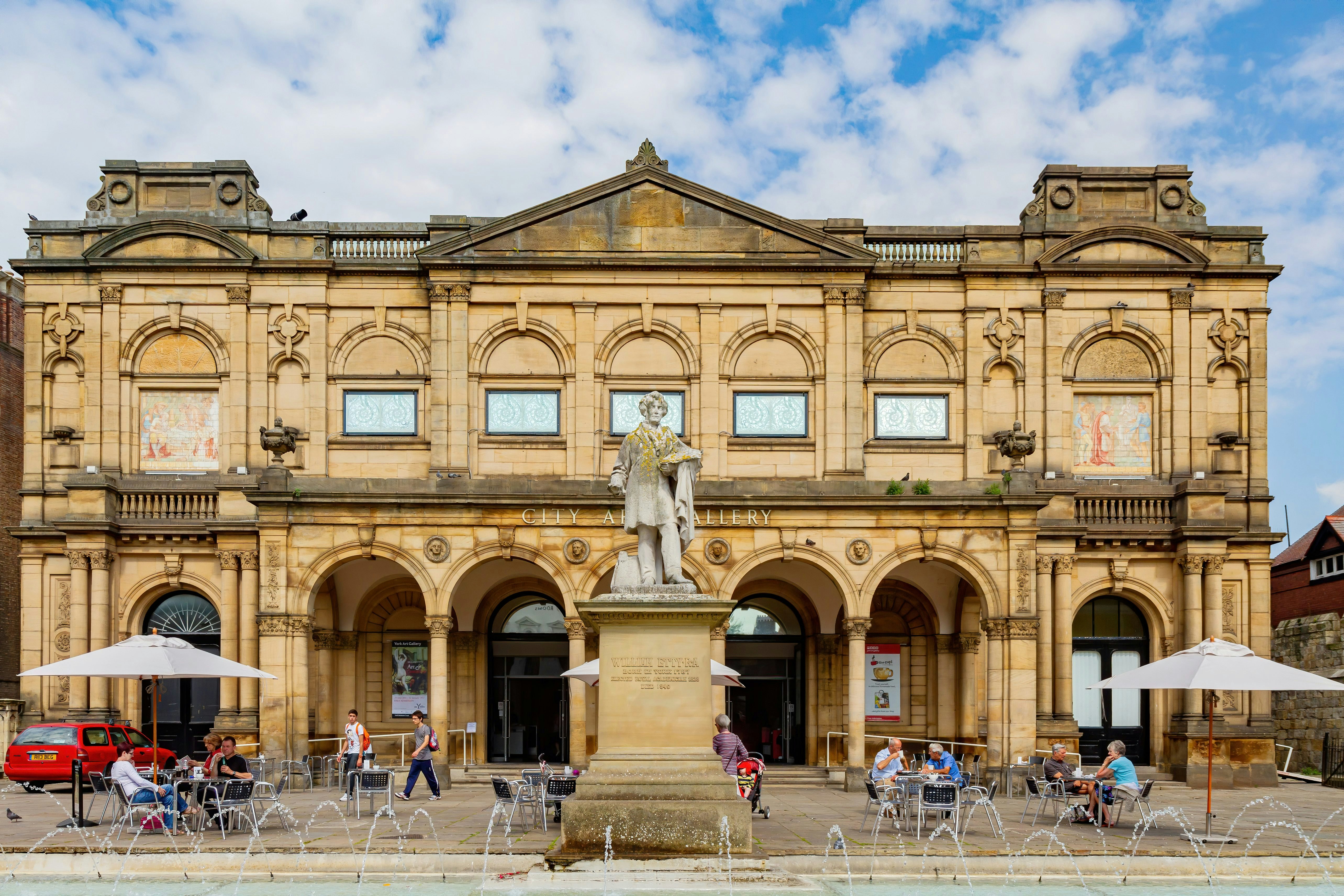
11. See Old Masters and modern wonders at York Art Gallery
The York Art Gallery offers a welcome respite from the city clamor, and the main exhibitions are free to admire. In The Burton Gallery, artworks by Italian Old Masters rub shoulders with 20th-century abstract paintings. Look out for L S Lowry’s depiction of York’s handsome Clifford’s Tower surrounded by his distinctive matchstick mob.
The surprising draw, though, is the gallery’s Centre for Ceramic Art (CoCA). Here, ceramics ranging from prehistoric pots to glazed delftware have been collected together into a 17m-long (56ft) ceramic rainbow.
12. Get a taste for York’s chocolate past
While other northern cities were busy with textiles and steel, York’s Victorian industrialists were building confectionery empires. Two of the world's biggest confectionery giants were founded in York, both family businesses. Rowntree's (famous for the KitKat chocolate bar) was established here in 1862, while Terry's (makers of the Chocolate Orange) emerged in 1767.
Neither business still exists in its original form, but visitors can learn all about their history at York's Chocolate Story near The Shambles. The attraction is part museum, part interactive experience, covering 4000 years of chocolate history. Exhibits include old packaging and adverts, and the tour ends with visitors getting to decorate their own lollipop. There's also a chocolate-focused on-site cafe.
For a more artisanal experience, head to York Cocoa Works. This independent, contemporary factory brought chocolate-making back inside the medieval city walls in 2018. Its focus is on sustainable supply chains, and tours cover the production process, alongside tastings by strength and geographical region. It's housed in a glass box, so you can see inside, and there's a shop and cafe onsite.
Planning tip: You can stroll in the 30-acre Rowntree Park, created by the family in 1921 as a memorial to staff who died in WWI. Across the road from the southern end of the park, the art deco Terry's chocolate factory still stands. Both sites are about a 30-minute walk from the medieval center, and on the route of the CitySightseeing York bus.
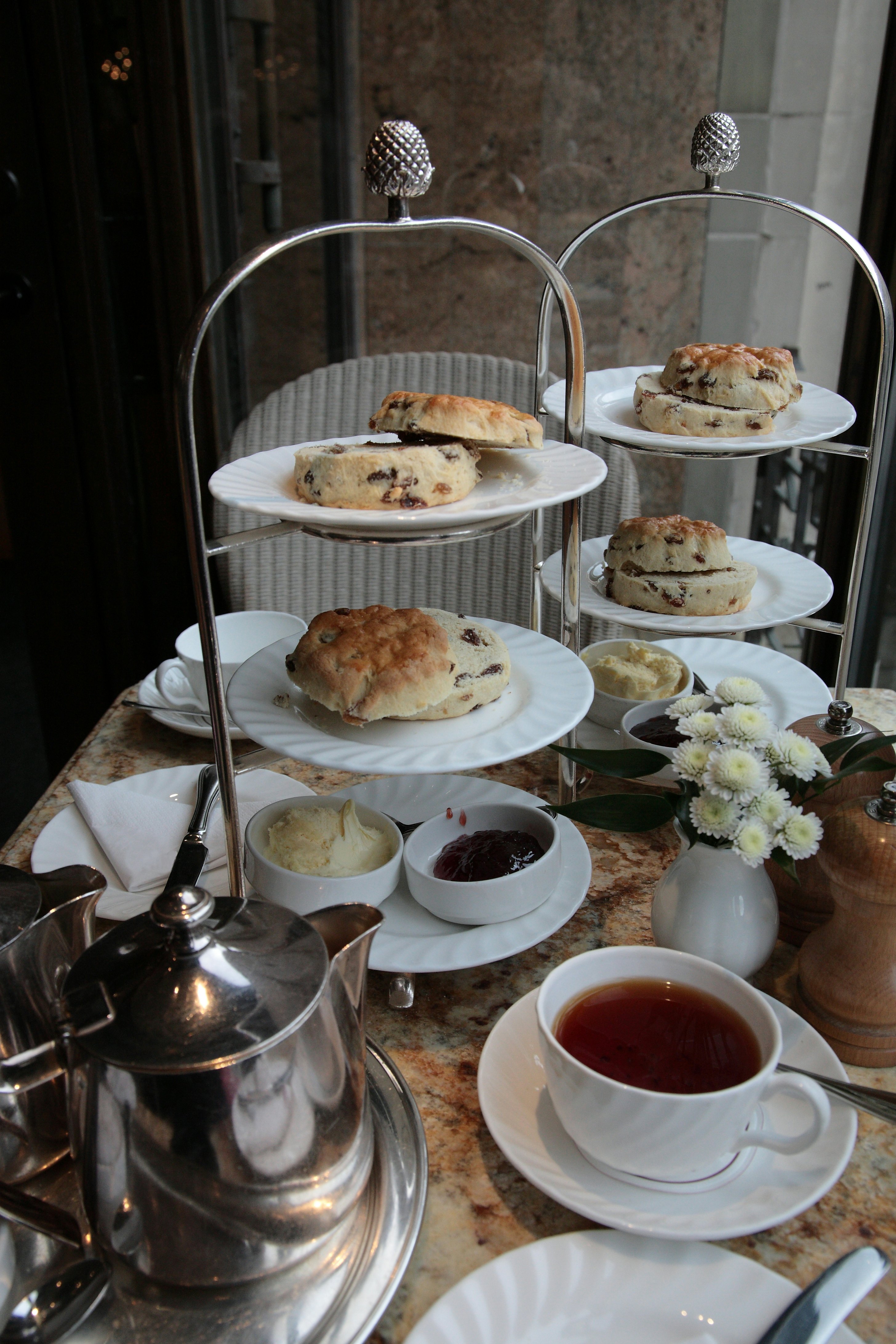
13. Enjoy afternoon tea
York has no shortage of places to dine on dainty sandwiches and cream-laden scones, washed down with a fragrant cup of tea. At The Grand, tiers of nibbles are served in 5-star surroundings, while afternoon tea at Forest at Galtres Lodge involves a tea pairing menu and miniature Yorkshire puddings. It’s even possible to enjoy a sophisticated cuppa aboard a restored train carriage at the National Railway Museum.
Most locals, though, would cry sacrilege if Bettys wasn’t on your list of locations to sate a spot of mid-afternoon peckishness. Wolfing down one of their fat rascal fruit scones amid scurrying, white-aproned staff is something of a York rite of passage, but be prepared to queue.
14. Day trip to the foodie enclave of Malton
It was the late Italian chef Antonio Carluccio who first gave this well-heeled Georgian market town, a 30-minute train ride from York, the moniker "Yorkshire's food capital," thanks to its high concentration of quality delis, butchers and local producers.
Malton also has its own craft gin distillery, Rare Bird Distillery, and its own award-winning craft brewery and taphouse, Brass Castle, known for gluten-free and vegan beers. There's also a local coffee roastery, Roost, and a cooking school – The Cook's Place – offering butchery classes and a cookbook club.
At Talbot Yard, a courtyard of 19th-century stables converted into tiny food shops, swing by for the Bengali five-spice roll at Bluebird Bakery. Elsewhere in town, Malton Relish is a superior eat-in deli serving treacle tarts, Yorkshire curd tarts, lavish sandwiches and breakfasts, while McMillans of Malton is a specialist whisky shop with a candlelit, three-floor whisky bar behind a fake wall.















